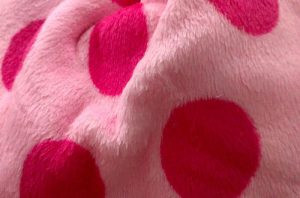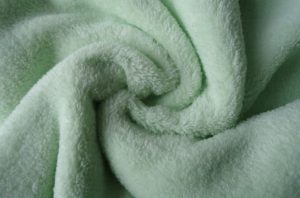Nowadays, the more common types of printing are as follows:
1. Transfer printing
(English: tropical print) First, the pigment is printed on the paper by a printing method to make transfer printing paper, and then the color is transferred to the fabric through high temperature (heating and pressing on the back of the paper). It is generally used for chemical fiber fabrics. The characteristics are The color is bright, the layer is delicate, the pattern is realistic, and the artistry is strong, but the process is currently only suitable for a few synthetic fibers such as polyester.
The transfer printing process is simple, the investment is small, and the production is flexible. It is currently popular in the market… But to be honest, compared with other types of printing, the price is a bit higher, but it is of a certain grade.
Printing process
2. Discharge printing
(English: wash out colors) (discharge) discharge print (discharge printing) use dyes that are not resistant to discharge agents to dye the ground color. After drying, use a color dye printing paste that contains a discharge agent or at the same time a discharge agent. During printing and post-processing, the ground dye in the printing area is destroyed and decolorized, forming a white pattern on the ground or a colorful pattern formed by dyeing with the flower dye. Also known as whitening or coloring. Can it make the effect as if the clothes have been washed in water? The color of the clothes seems to have been washed off a lot, mottled~~ In fact, this is a discharging. The principle of discharging is to pull out the color of the fabric tissue and make it a lighter color. , Strong like a washing effect, it is a cooler print for men’s clothing!
3. Reduction printing
(English: Decrement Print) This process uses the difference in chemical resistance properties of different fibers in interwoven or blended fabrics. A burnout agent is applied to the fabric through a printing method to partially remove one of the fibers, leaving the other fibers to form a translucent pattern. It is also called burnout printing or burnout printing.
4. Shrink printing
The printing method is used to locally apply chemicals that can swell or shrink the fibers on the fabric, and through proper treatment, the difference between the expansion or shrinkage of the fibers in the printed part and the fiber in the non-printed part can be obtained, so as to obtain a product with a regular uneven surface pattern.
Such as cotton printed seersucker with caustic soda as bulking agent. Also called bump printing.
Silk scarf printing process
5. Flat screen printing
The printing mold is a polyester or nylon screen (pattern) fixed on a square frame and has a hollow pattern. The pattern on the pattern can be penetrated by the color paste, and the non-patterned place is closed with a polymer film. When printing, the pattern is pressed tightly on the fabric, and the color paste is placed on the pattern, which is scraped back and forth with a scraper to make the color paste reach the surface of the fabric through the pattern. Flat screen printing has low production efficiency, but has wide adaptability and flexible application, which is suitable for small batch and multi-variety production.
6. Rotary screen printing
The printing mold is a cylindrical nickel-skin screen with a hollow pattern, which is installed in a certain order above the circulating rubber guide belt and can rotate synchronously with the guide belt. When printing, the color paste is input into the net and stored at the bottom of the net. When the rotary net rotates with the guide belt, the scraper pressed against the bottom of the net and the flower net are relatively scraped, and the color paste reaches the surface of the fabric through the patterns on the net.
Rotary screen printing is a continuous process, high production efficiency, and has the advantages of roller and flat screen printing, but there are certain limitations in the fineness of the pattern and the richness of the printing color. Rotary screen printing has certain limitations in the choice of color and luster.








